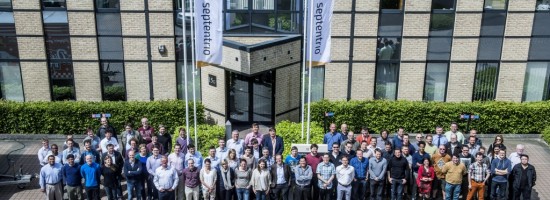- Home
- About
- Topics
- 3D imaging
- Aerial photography
- Bathymetry
- Building Information Modeling (BIM)
- CAD
- Energy
- Cadaster
- Environment
- Geodesy
- GIS
- LiDAR
- Mapping
- Navigation
- Open source software
- Other
- Photogrammetry
- Precision agriculture
- Radar
- Remote sensing
- Satellite imaging
- Satellite navigation
- Seismology
- Sensors
- Surveying
- UAS
- Tracking
- Magazines
- Formats
- All
- Clients
- Tips
- Contact Us
ADVANCING GNSS: A profile of Septentrio

Septentrio makes high-precision GNSS receivers for commercial and scientific applications. Its origins are in European space research, to which it is still tightly connected. I discussed the company’s history and strengths with Jan Van Hees, its business development manager, and Bruno Bougard, its R&D Director.
Septentrio was founded in the 1990s at IMEC, a microelectronics basic research company, as part of work for the European Space Agency that led a group to develop high-precision GPS and Glonass technology. To commercialize this technology, in 2000 IMEC spun off Septentrio. Most of its staff of about 100 people, which includes about 20 nationalities, is based at the company’s headquarters in Belgium, with additional offices in California and Hong Kong. About half the staff is in engineering and almost everybody in engineering has at least a college degree; many have PhDs. The company subcontracts the manufacturing of the boards and does final assembly, configuration, test, and maintenance in house.
